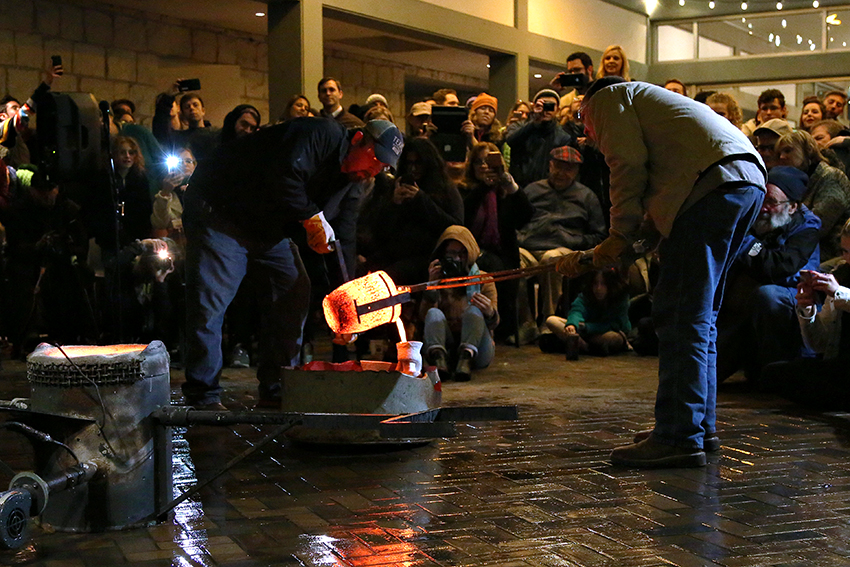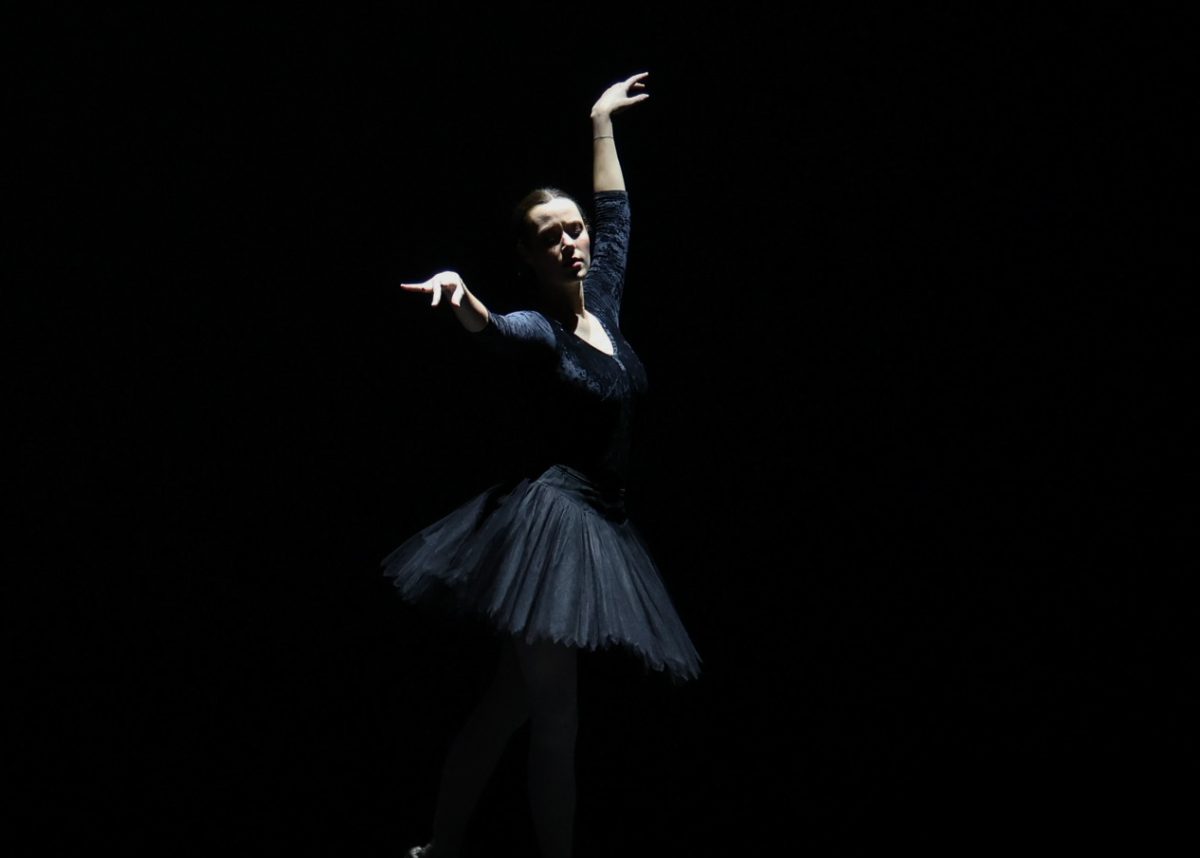You won’t find any red ropes or leering security personnel at the UMLAUF Sculpture Garden & Museum, where unlike in traditional museums, guests receive a warm welcome into the forge and are even invited to touch the art.
On Tuesday night, the UMLAUF held its first “After Dark” event of year. “After Dark” is the garden’s free monthly event which often features different artists to give the public an up close and personal view of the art. The new year was christened with a live bronze pour demonstrated by Deep in The Heart Art Foundry.
Katie Robinson Edwards, UMLAUF’s curator, said while the museum strives to make their events educational, the “After Dark” series also provides guests with an intimate experience with the art, allowing them to wander through the garden past its typical closing time.
“It is an absolute delightful haven that is peaceful and quiet and serene in the middle of the city,” Edwards said. “It’s a place to come that is restful but also educational if you want it to be.”
The garden was given to the city by artist Charles Umlauf, a professor emeritus of life drawing and sculpture at UT. Umlauf donated his home, studio, land, funding and over 165 works of art to the city with the hopes of opening a museum.
“It (the sculpture garden) really is Austin’s museum,” Edwards said. “It was given to the city of Austin, and it was really for the city.”
While the garden has been around for nearly 30 years, few Austinites know about it. Ben Engel, a longtime Austin resident, said he made his first trip out to the Umlauf because of the “After Dark” event.
“I’ve always wanted to go so this is, I think, a wonderful experience for me just to get to better know the area,” Engel said. “It’s like a hidden treasure.”
Tuesday’s “After Dark” featured the same “lost wax” bronze technique that Umlauf himself used to create his sculptures. Clint Howard, owner of Deep in The Heart Art Foundry, said this bronze process required the sculpture to go through five “generations” which include a clay sketch, plaster mold, wax, a porcelain mold and the final bronze piece. The technique is the same as the one used by the ancient Greeks and is called “lost wax” because the wax must be melted out and “lost” before the cast can be refilled with bronze.
“It hasn’t changed in 4,000 years, so we’re still making bronzes the same way,” Howard said. “I mean we’ve got electricity, and we’ve got propane tanks, but the same steps have to be done.”
One of Umlauf’s biggest desires for his museum was that people would be able to get up close and personal with the art. The “After Dark” series allows guests free access to the garden and a behind-the-scenes look at how the art is made.
“The public doesn’t understand how much actually goes into making a bronze,” Howard said. “When we do these demonstrations, it’s always great to kind (of) enlighten them into what it takes to make this.
The demonstration, which included the pouring of three pounds of liquid hot bronze, had guests so enthralled that many leapt from their seats to get a better look. Children and adults alike eagerly looked on as Howard and Edwards explained the lost wax process.
“I think we all like to see a light in people’s eyes when they understand the process,” Edwards said. “It’s enjoyable to understand a process, but it also gives you a kind of structure for how to problem solve. I think (at) an event like this, you’ll see people get a glimmer.”















